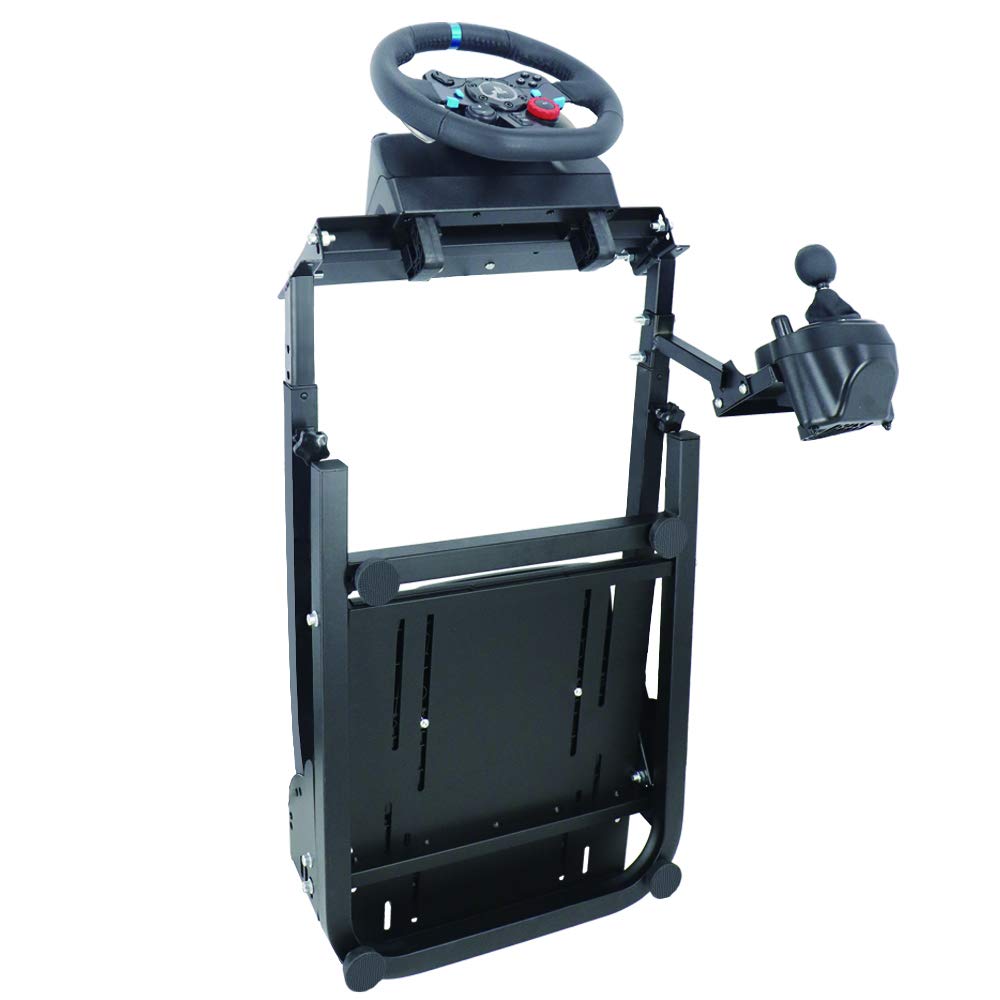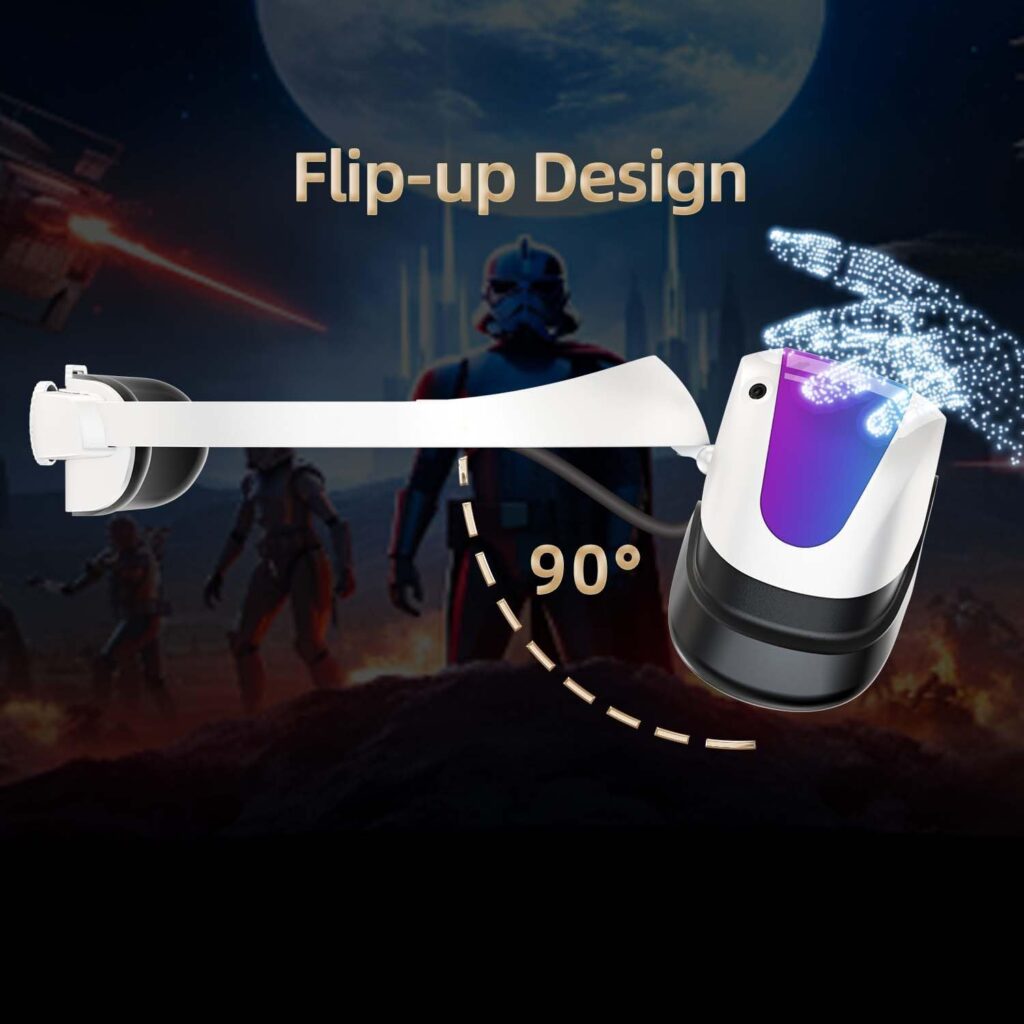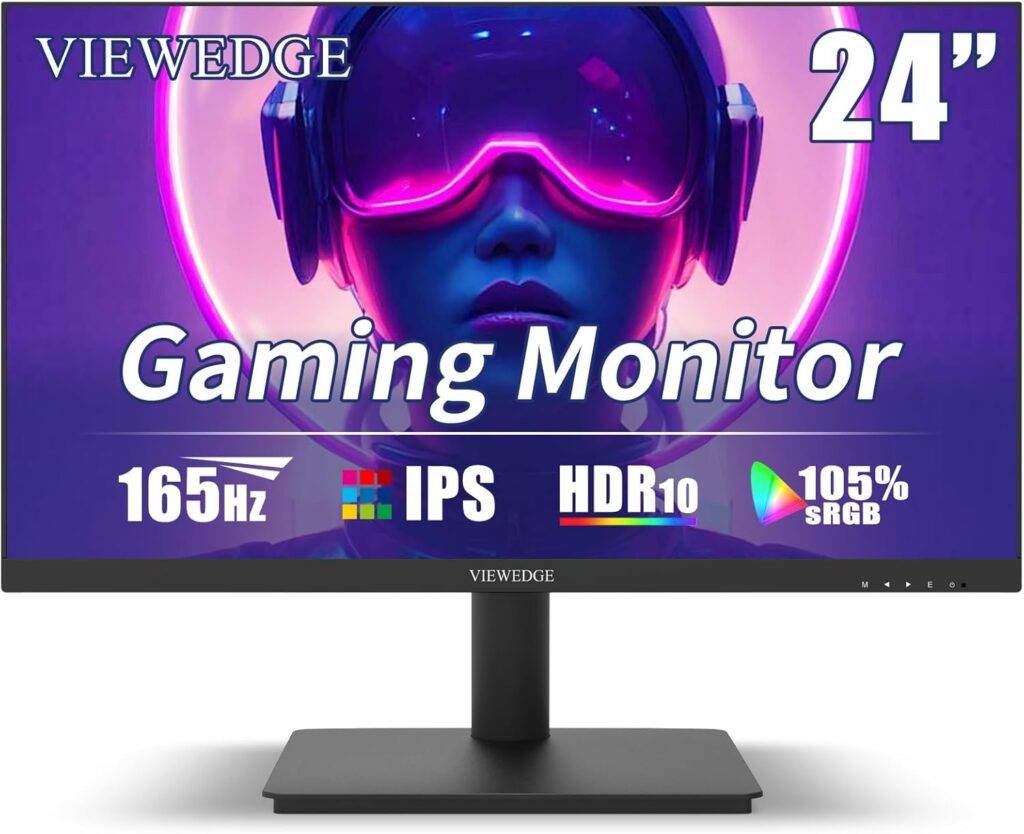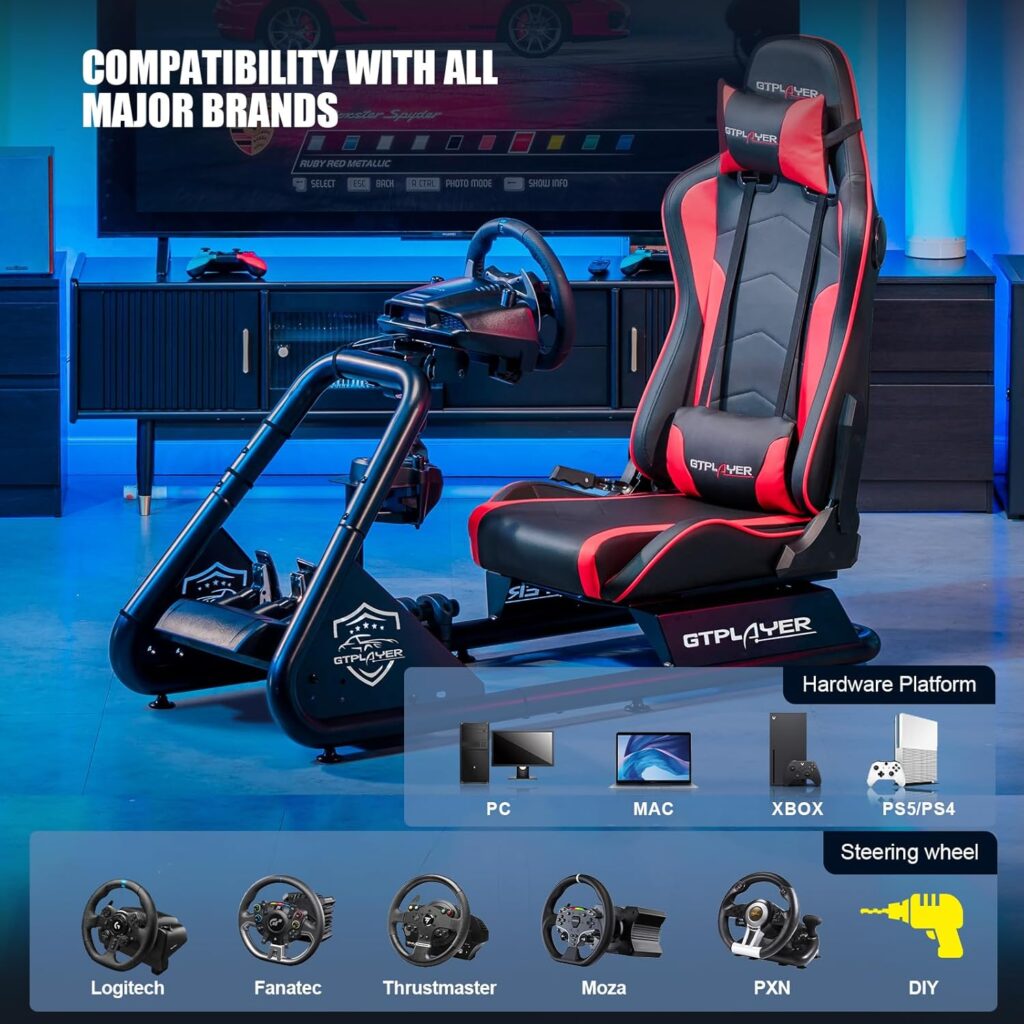So, you think your little one might have what it takes to be the next Lewis Hamilton or Danica Patrick? Well, before you start imagining them on the podium at the Indianapolis 500, it might be worth considering sim racing as a stepping stone to their motorsports dreams.
In this discussion, we'll explore the world of sim racing for kids and how it can provide a safe and exciting platform for them to develop their racing skills. But there's more to it than just driving virtual cars around a track – so buckle up and get ready to discover the ins and outs of this digital racing realm.
Key Takeaways
- Sim racing for kids helps develop driving skills and techniques.
- It provides a safe environment for learning and practice.
- Sim racing promotes focus, concentration, and quick decision-making skills.
- It offers an adrenaline-pumping entertainment for racing enthusiasts.
The Benefits of Sim Racing for Kids
Sim racing for kids offers a safe and exciting way for them to develop their driving skills and techniques. With sim racing, children can experience the thrill of racing without the risks associated with real tracks. It provides an opportunity for them to compete against their friends and other racers, testing their abilities and pushing their limits. Sim racing not only improves driving skills, but also offers an adrenaline-pumping entertainment for racing enthusiasts.
One of the key benefits of sim racing is the safe environment it provides. Kids can learn and practice driving techniques without the fear of accidents or injuries. They can experiment with different strategies, learn how to handle different types of vehicles, and improve their understanding of racing dynamics. Sim racing also promotes the development of focus, concentration, and quick decision-making skills, as racers need to react swiftly to changing conditions and obstacles on the virtual tracks.
Moreover, sim racing offers an engaging and interactive experience for kids of all ages. They can choose from a wide range of virtual racing games and platforms, customizing their cars and tracks to their liking. This allows them to explore their creativity and develop their own racing style. Sim racing also provides a social aspect, as kids can connect with other racers online, participating in multiplayer races and competitions.
Choosing the Right Sim Racing Equipment
When it comes to choosing the right sim racing equipment for your kids, there are a few key factors to consider.
First, look for equipment that's age-appropriate and suits their skill level. This will ensure that they can fully engage with the simulator and enjoy a realistic racing experience.
Secondly, consider the features and capabilities of the simulator, such as the driving physics and mechanics, race track selection, and customizable settings.
Equipment Selection Tips
To choose the right sim racing equipment, there are several factors to consider.
First, think about the level of realism and immersion you desire for an enhanced racing experience. Look for equipment that offers high-quality graphics, sound effects, and realistic driving physics to make you feel like you're on a real race track.
Next, consider the compatibility of the equipment with different devices and platforms. This is important to ensure a seamless experience and avoid any compatibility issues.
Another important factor is the ability to customize settings and difficulty levels. Look for equipment that allows you to adjust settings according to your preference and cater to different skill levels. This will help keep the racing experience challenging and engaging.
Durability and build quality are also crucial considerations. Sim racing equipment should be able to withstand rigorous use, so it's important to choose equipment that is well-built and durable.
When selecting accessories, it's important to opt for age-appropriate equipment. Different equipment may be suitable for different age groups, so this is an important consideration to ensure a safe and enjoyable experience.
Age-Appropriate Simulators
Age-appropriate simulators ensure a safe and enjoyable racing experience for young drivers. These simulators are designed to cater to children's skill levels and cognitive development. Safety considerations for young racers are a top priority in the design of sim racing equipment for kids.
These simulators offer customizable settings and difficulty levels to ensure an enjoyable and challenging experience for young racers. They also provide a safe environment for children to develop their driving skills. Age-appropriate simulator features prioritize accessibility and engagement, making them suitable for all ages.
Setting Up the Sim Racing Environment
Now that you have chosen the right sim racing equipment for your young racer, it's time to set up the sim racing environment for an optimal experience.
There are a few key points to consider.
First, make sure you have all the necessary equipment essentials, such as a racing rig, monitor or VR headset, and a gaming console or PC.
Next, select the right software and game that suits the skill level and preferences of your child.
Lastly, take the time to optimize the racing experience by adjusting the simulator settings to enhance the realism and enjoyment of the game.
Equipment Essentials
When setting up the sim racing environment, ensure that you have all the essential equipment for an immersive and realistic experience. Here are the equipment essentials you'll need:
- Racing Wheel: A high-quality racing wheel with force feedback technology will provide a realistic feel and precise control.
- Pedal Set: A pedal set with adjustable sensitivity will allow you to accurately modulate throttle, brake, and clutch inputs.
- Racing Seat: A comfortable and ergonomic racing seat will enhance your racing experience and provide proper support during long gaming sessions.
To ensure optimal performance, regular equipment maintenance is crucial. Clean and dust your equipment regularly, and check for any loose connections or worn-out parts. If you encounter any common issues, such as calibration problems or input lag, consult the manufacturer's troubleshooting guide or seek assistance from online forums.
Lastly, consider upgrading your equipment as your skills and passion for sim racing grow. Upgrading to more advanced and specialized equipment can further improve your racing experience.
Software and Game Selection
To set up the sim racing environment, it's important to carefully select the software and games that will provide an immersive and engaging experience.
When comparing sim racing software, consider the advanced technology, realistic physics, and customizable settings that can enhance the racing experience. Look for recommended sim racing games that offer a wide selection of race tracks and difficulty levels to suit different skill levels.
It's also important to find software and games that not only entertain but also improve driving skills and techniques in a safe environment. Additionally, consider the ability to compete against friends and other racers to test abilities and make the experience more exciting.
Lastly, look for software and games that provide an engaging and interactive experience suitable for all ages.
When finding the best sim racing equipment, consider the compatibility with the chosen software and games to ensure a seamless and enjoyable experience.
Optimizing the Racing Experience
Are you looking to optimize your sim racing experience and create an immersive environment that will engage racers of all ages? Here are some tips to help you set up the perfect racing environment:
- Customize the racing difficulty: Adjust the settings to match your skill level and challenge yourself. From beginner-friendly options to advanced simulations, find the right balance for an enjoyable experience.
- Create immersive settings: Utilize advanced technology to enhance your racing experience. From realistic graphics to surround sound systems, immerse yourself in the virtual world of motorsports.
- Build an interactive environment: Access a wide selection of race tracks from around the world for a diverse racing experience. Race on iconic circuits and explore new tracks for an exciting and dynamic gameplay.
Selecting the Best Sim Racing Games for Kids
Selecting the best sim racing games for kids requires considering several factors. First, it's important to choose age-appropriate games that have content and complexity suitable for your child. Look for games with a user-friendly interface and simple controls that kids can easily navigate and enjoy.
Multiplayer options are also important as they provide opportunities for friendly competition and camaraderie. Look for games that offer online multiplayer modes, allowing kids to race against real players from around the world. This adds excitement and challenge to the gaming experience.
In addition, parental controls are crucial to ensure a safe gaming environment. Look for games that offer features like chat filters, age restrictions, and the ability to disable or limit certain features. These options allow parents to monitor and manage their child's gaming experience, ensuring it is safe and age-appropriate.
Understanding Sim Racing Controls and Settings
When it comes to sim racing controls and settings, there are a few key points to keep in mind.
First, consider whether you'll be using a controller or a wheel, as this will affect your experience.
Next, take the time to customize your control settings to suit your preferences, adjusting things like steering sensitivity and brake strength.
Controller Vs. Wheel
In the world of sim racing, two primary types of controls stand out: the controller and the wheel. Each option has its own pros and cons, and understanding the differences can help you make an informed decision.
- Controllers are a popular choice for beginners due to their familiarity and versatility. They're easy to use and require less setup. However, they lack the realism and immersion that a wheel can provide.
- Wheels, on the other hand, offer a more authentic driving experience. They provide better precision and feedback, allowing you to feel the road and make more precise movements. This can greatly enhance your overall simulation experience.
When it comes to skill development, using a wheel can be beneficial as it requires more finesse and control. It can help improve your hand-eye coordination and understanding of vehicle dynamics.
In terms of cost, controllers are generally more affordable compared to wheels, making them a budget-friendly option. However, investing in a wheel can greatly enhance the realism and enjoyment of sim racing.
Ultimately, the choice between a controller and a wheel comes down to personal preference and the level of realism you desire in your virtual motorsports experience.
Customizing Control Settings
To further enhance your sim racing experience after choosing your preferred control method, it's important to understand the customizable control settings available to you. Custom control presets, fine tuning controls, and button mapping options can all be adjusted to suit your preferences and playstyle. By customizing the controls, you have the opportunity to create a personalized and enjoyable racing experience. Whether you want to adjust the sensitivity of the steering, change the button layout, or fine-tune the throttle and brake sensitivity, the control settings allow you to tailor the game to your liking. Take a look at the table below to see some of the common control settings that can be adjusted in sim racing games:
| Control Setting | Description |
|---|---|
| Steering Sensitivity | Adjusts how responsive the steering inputs are |
| Throttle Sensitivity | Controls how sensitive the throttle input is |
| Brake Sensitivity | Modifies the sensitivity of the brake pedal |
| Button Mapping | Allows you to assign specific functions to different buttons |
| Difficulty Levels | Adjusts the overall difficulty of the game |
Importance of Practice
Practicing sim racing controls and settings is essential for young racers to develop their skills and maximize their performance on the virtual race track. Through practice, kids can fine-tune their driving techniques and adapt the settings to match their skill level and preferences. It's like a virtual laboratory where they can experiment and discover what works best for them.
Regular practice sessions allow kids to build confidence and familiarity with the virtual racing environment, enhancing their overall experience. They can gradually push their limits, trying different settings and strategies to improve their lap times and racecraft. The more they practice, the more they'll understand the intricacies of sim racing controls and settings, developing a deeper appreciation for the technical aspects of motorsports.
Teaching Safety and Sportsmanship in Sim Racing
Promoting safety and sportsmanship is crucial when teaching kids the ins and outs of sim racing. It's important to teach them not only the technical skills but also the values that make them responsible and respectful competitors. One way to instill these values is by teaching communication skills. Encourage your child to communicate effectively with other racers, whether it's through voice chat or text messages. Teach them to be polite, clear, and concise in their interactions, fostering a positive and respectful environment.
Another key aspect is promoting fair play. Teach your child to always follow the rules and guidelines of the virtual racing community. Encourage them to be honest and avoid cheating or exploiting glitches in the game. Remind them that winning at all costs isn't as important as playing fairly and respecting other racers.
Sim racing can also be a great opportunity to foster teamwork. Encourage your child to participate in team events or join sim racing leagues where they can collaborate with others towards a common goal. Teach them the importance of supporting their teammates, sharing knowledge, and working together to achieve success.
Creating a Supportive and Engaging Sim Racing Community
Creating a supportive and engaging sim racing community is essential for fostering a positive and inclusive atmosphere where participants feel welcomed and valued. To create a positive culture within the community, it's important to encourage teamwork and promote fair play. Here are three key ways to achieve this:
- Encourage Friendly Competition: Foster an environment where racers of all skill levels can compete in a friendly and supportive manner. Emphasize that winning isn't the only goal; it's also about enjoying the experience and learning from one another.
- Organize Engaging Events: Keep the community active and connected by organizing regular events and challenges. These can range from weekly races to special tournaments or even team-based competitions. By providing opportunities for racers to come together and interact, you create a sense of camaraderie and belonging.
- Provide Resources and Support: Support newcomers by providing resources and guidance to help them learn and improve their racing skills. This can include tutorials, tips, and mentorship programs. By helping new members feel supported and valued, you foster a community that's inclusive and welcoming.
Setting Realistic Goals and Tracking Progress
Setting realistic goals and tracking progress is crucial for young sim racers to measure their improvement and stay motivated. By setting specific goals, such as improving lap times or mastering challenging tracks, kids can have a clear target to work towards. Encouraging them to set goals that are within reach but still challenging enough will help them feel a sense of achievement when they accomplish them.
To measure improvement, kids can track their progress through various techniques. One effective method is to record and compare lap times. By keeping a log of their lap times and comparing them over time, kids can see how they're progressing and identify areas for improvement. Additionally, tracking race results can provide insight into their overall performance and help them gauge their progress against other racers.
It is important to celebrate milestones along the way. When kids achieve significant accomplishments, such as consistently completing clean laps or conquering a difficult track, it reinforces the importance of tracking progress and motivates them to continue working towards their goals.
Furthermore, teaching kids to reflect on their performance and make adjustments based on their progress is an essential skill. By analyzing their strengths and weaknesses, they can develop critical thinking skills and strategize how to improve further.
Balancing Screen Time and Physical Activity
To maintain a healthy balance between their sim racing pursuits and physical well-being, young racers must find a way to manage their screen time and incorporate regular physical activity. It's important to set screen time recommendations for children and establish limits to ensure they aren't spending excessive time in front of screens. Encourage breaks for physical activity during extended screen time sessions, allowing them to stretch their legs and get their blood flowing.
Incorporating structured physical activities into the daily schedule is another effective strategy. This could include activities such as bike rides, walks, or playing sports with friends. Fun physical activities for kids can also be found in virtual fitness programs or interactive video games that encourage movement. These programs allow children to engage in physical activity while still enjoying their screen time.
To promote a healthy balance between screen time and physical activity, consider using screen time as a reward for completing physical activities or chores. This encourages children to prioritize their physical well-being while still enjoying their virtual racing pursuits.
Encouraging Continued Learning and Improvement
Encouraging young racers to continuously learn and improve their skills is essential for their development in sim racing. By setting personal improvement goals for each racing session, kids can stay motivated and focused on their progress. As a parent, you can provide constructive feedback and guidance on driving techniques and strategies to help them refine their skills. Additionally, offering additional training programs and coaching sessions can enhance their abilities and introduce them to new techniques.
One effective method to track progress and identify areas for improvement is through data analysis. By utilizing performance metrics and analyzing race data, young racers can gain valuable insights into their performance, such as lap times, braking points, and racing lines. This information can be used to identify strengths and weaknesses and develop targeted training plans.
Coaching techniques can also play a crucial role in helping young racers improve. Coaches can provide personalized instruction, offer race analysis, and give tips and tricks specific to each child's needs. Virtual training programs are another valuable resource that can provide structured lessons and practice sessions to help young racers enhance their skills.
Creating a supportive and positive learning environment is key to promoting continuous growth and development. Encouraging young racers to embrace challenges, learn from mistakes, and celebrate achievements will foster a love for learning and improvement in sim racing.
Frequently Asked Questions
Is Vr Good for Sim Racing?
VR is great for sim racing! It enhances the simulation experience by providing a realistic and immersive environment. With high-quality graphics and sound effects, it feels like you're actually on the race track.
VR also offers a wide selection of race tracks from around the world, giving you a variety of experiences. Plus, customizable settings and difficulty levels make it accessible for all skill levels.
What Is the Best Platform for Sim Racing?
The best platform for sim racing is subjective and depends on your preferences. However, popular options include PC, PlayStation, and Xbox.
Each platform offers a variety of sim racing games, such as iRacing, Assetto Corsa, and Gran Turismo.
To enhance your experience, consider investing in sim racing equipment like a steering wheel and pedals.
Additionally, there are sim racing leagues where you can compete against other players and showcase your skills.
Is Sim Racing a Good Practice?
Sim racing is a fantastic practice for kids. It offers numerous benefits for their mental development, enhancing skills like hand-eye coordination. They can learn about sportsmanship and fair play while engaging in friendly competition with others.
Sim racing provides a safe and immersive environment where kids can improve their driving skills without the risks of real tracks. It's a convenient and accessible way for them to experience the adrenaline of racing while honing their abilities.
What Is the Most Realistic Sim Racing Game?
The most realistic sim racing game is subjective and can vary based on personal preferences. However, some popular choices among gamers include titles like iRacing, Assetto Corsa, and Project Cars. These games offer realistic physics, accurate car models, and a wide range of tracks to race on.
To enhance your sim racing experience, investing in top sim racing hardware such as a racing wheel and pedals can greatly improve immersion.
Practice and dedication are key to improving your skills in sim racing.
Conclusion
In conclusion, sim racing for kids offers numerous benefits, including improved hand-eye coordination and decision-making skills.
According to a recent study, children who engage in sim racing have shown a 25% increase in their ability to multitask effectively. This statistic highlights the positive impact that virtual motorsports can have on a child's cognitive abilities.
By providing a safe and engaging environment, parents can nurture their children's passion for sim racing while promoting important skills for their overall development.




